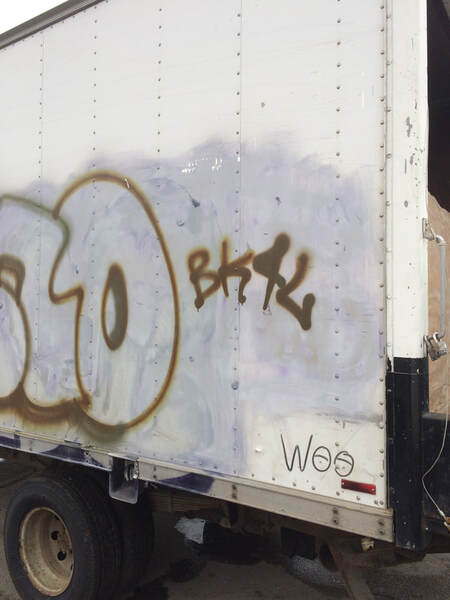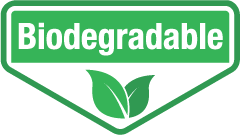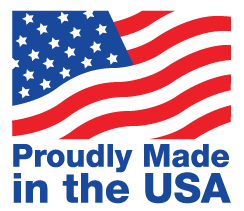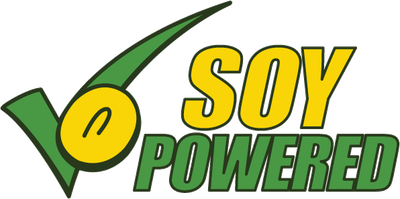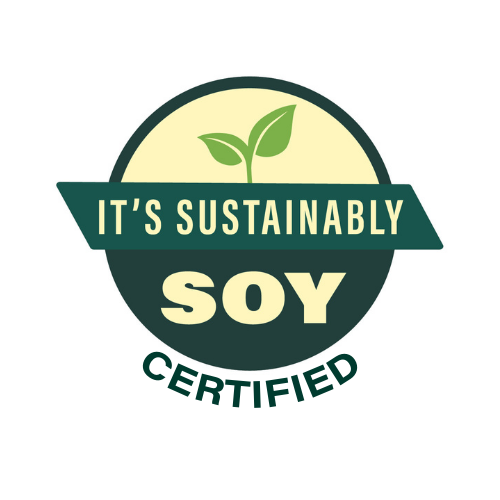Anti-Graffiti Coat by Coval: An Effective, Anti-Graffiti, Nano-Coating Proven To Protect Many Surfaces from Graffiti Tagging.
PRODUCT DESCRIPTION
Anti-Graffiti Coat is a clear, thin, strong, effective anti-graffiti coating ideal for protecting many surfaces from graffiti attack.
Anti-Graffiti Coat is a non-sacrificial coating that lasts through many graffiti attacks and graffiti removals.
This spray applied anti-graffiti coating is fast and easy to apply and it cures quickly provide the necessary protection to defend against graffiti tags.
Anti-Graffiti Coat works by creating a super thin and super strong barrier between the surface and the paint from the graffiti attack.
When graffiti attacks happen, the graffiti spray paint remains on the surface of the coating and cannot penetrate deep into the substrate. With the graffiti stopped on the surface, graffiti removal becomes fast, easy, complete and without risk to underlying paint, signage or the substrate itself. Also, the graffiti removers work quickly remove the graffiti paint, but cannot penetrate the Anti-Graffiti Coating and damage the underlying painted surface.
EFFECTIVENESS
Anti-Graffiti Coat is effective to prevent against from graffiti spray paint, permanent markers, grease pens, paint marker, and sticker graffiti.
RECOMMENDED USES
Anti-Graffiti Coat is recommended for use on
- Painted surfaces, including mail boxes, newspaper boxes, parking meter boxes, fire hydrants, and bus stops
- Car and trucks, including delivery vehicles and box trucks.
- Metal surfaces, including sign backs, stop light control boxes, elevators, parking garages
- Smooth or polished concrete, brick or stone (Note: Coating is non-breathable, so not for use for exterior applications that require breathable coatings
- Plastics, including playgrounds, newspaper boxes, bus stops, train, bus and transit (Note: Not for use on HDPP or smooth HDPE surfaces)
- Signs, including the new diamond reflective highway signs.
- Wood
Contact us for pricing and to place order today. 773-257-9300 or contact us by email
Application instructions are detailed below.
PRODUCT CHARACTERISTICS
Coverage
Coverage: 600-1200 sq. ft/gal (non-porous surfaces)
200-400 sq. ft/gal (porous surfaces)
Coverage will vary depending on the porosity and texture of the substrate and application process.
Spread Rate
Recommended Spread Rate per coat:
Wet mils: 0.5-1.0
Dry mils: 0.1-0.6
Dry Time
Drying Time: (@ 77 F, 50% RH):
Drying time is: Temperature, humidity and film thickness dependent.
Touch: 2-3 hours
Through: 3-5 hours
Full Cure: 7 Days
Properties
Color: Clear to slight amber to rose (depending on temp and humidity) always dries clear.
Finish: Gloss only
Vehicle Type: Solvent Base
Flash Point: (C Penskey Martens closed Cup) -9C/15F
VOC: less than 100 g/L
Weight/Gallon: 7.36 lb.
Non-breathable
SURFACE PREPARATION
Surface must be clean, dry, and in sound condition. Remove all oil, dust, grease, dirt, loose rust, and other foreign
material. Use Coval Step #1 Surface Cleaner.
Painted or Coated Surfaces, Plastic and Signs
Clean entire surface with Coval Step #1 Cleaner for Painted Surfaces (do not use solvents as this will ruin most of this
type of surfaces), rinse with fresh water. Make sure the surface is clean and dry, and then apply Coval Anti-Graffiti
Coat directly over the surface with the spray method only as rolling or brushing our solvent based coating may cause
the paint to smear from the pressure of the roller or brush moving across the surface.
Unpainted Masonry and Concrete
For all porous masonry and concrete make sure the surface is clean and dry. Use Coval Step #1 Cleaner for Unpainted
Surfaces then wash off with water, once the surface is completely dry, less than 13% moisture, pre-seal the surface
with Coval Quick Seal & Enhance (See Coval Quick Seal & Enhance Data Sheet for complete application instructions)
or any good quality water based sealer. Note: we recommend our Quick Seal & Enhance as it dries in less than 5
minutes which saves on labor and down time. Other sealers can take up to 3 hours to 2 days to dry before application
of our Anti-Graffiti Coat. For existing graffiti on unpainted surfaces use Coval Paint Remover and rinse with fresh water
and allow to dry.
TEST and APPLICATION PROCESS
Test Area
Due to the wide variety substrates and the various methods of application and environments, always test Coval Anti-
Graffiti Coat in an inconspicuous location to ensure adhesion and performance. There will be a slight enhancement
or change in appearance from the natural surface in addition to a gloss look.
(Never roll or brush on painted surfaces or signs. Only spray)
Application
Coval Anti-Graffiti Coat is best sprayed onto the surface to achieve the best look and proper spread rate, however
not all surfaces or locations can be applied by this method. If this is the case; then two different optional methods
depending on the configuration of the piece, the location and the desired finish are available. Coval Anti-Graffiti Coat
can also be rolled or brushed on. With all methods of application, always mask off any adjacent surfaces to keep them
free of drips or accidental coating. If applying outdoors, make certain the ambient temperature is between 45° F and
105° F, RH 90% or less, and that there is no chance of rain for a minimum of 5 hours after the estimated time of
completion of the coating process. Also make certain there will be no additional morning dew to make the surface
damp again before it has dried. For diamond prism ink signs the signs must be sprayed and lying flat or ink will run.
Spraying
Shake the Coval Anti-Graffiti Coat contents thoroughly to resuspend the nano particles that have settled to the
bottom. Typically, you may find up to a ¼” of nano particles settled on the bottom of the can, these all need to be
re-suspended for the coating to perform. Make certain to re-shake every 15-20 minutes to ensure the nano particles
are re-suspended to ensure proper performance. When surface preparation is complete and surface is dry and free
of dust, begin application using a high volume, low pressure (HVLP) spray gun with a 1.0 size tip and the pressure set
at approximately 25 to 30 psi. On a separate piece of cardboard, adjust the spray gun to first spray a test pattern to
achieve an 8” elongated pattern approximately 1 ½” wide in the middle without too much liquid coating as to cause any puddling. Once this spray pattern is achieved and the desired fluid amount is on the test cardboard you are ready to begin. Spray the surface in a cross-pattern; left to right, then up and down at a medium pace approximately 8” to 10” off the surface as this material needs to go on thin. This will provide sufficient coverage and will help prevent voids in the surface. Desired wet film thickness (WFT) is approximately 0.5 to 1.0 mils. When spraying outdoors, make certain there will be no rain for at least 5 hours after your anticipated completion time. The temperature needs to be between 45f and 105f with RH 90% or less, also make certain there will be no return of morning dew before the coating has had an opportunity to dry for 5 hours. If there is high wind, this will affect the quality of the finish, wind can disrupt the spray pattern from your HVLP, and it can contribute to contamination of the finish from blowing dust. It may be necessary to erect a wind screen to protect the area prior to beginning the coating application.
To spray small pieces or tight locations you can use a “Preval” sprayer. This is a small disposable sprayer that can
spray any liquid and holds approximately 6 oz and is ideal for touch ups as well. Available in the paint department of
major home improvement stores, or major paint store chains.
CAUTION: If using spray application method in an enclosed space, make certain to tent off the area being sprayed
with plastic tarps to avoid spray dust from traveling and contaminating other surfaces with overspray. Tented and
enclosed areas should always have a positive supply of fresh air and have ventilated exhaust air to outside using fans.
Never spray near any open source of ignition such as pilot light flames, or anything that may spark, as this may cause
ignition and explosion of the fumes and vapors.
Rolling
Never roll Coval Anti-Graffiti Coat onto painted signs or surfaces as this may smear the paint. Shake the contents
thoroughly to resuspend the nano particles that have settled to the bottom, typically approximately ¼” of nano
particles can settle to the bottom of the can, make certain to re-shake every 15-20 minutes while using to re-suspend
these nano particles to ensure proper performance of the coating. Pour the Coval Anti-Graffiti Coat into a roller pan
and completely saturate the roller with the coating.
The coating needs to be applied thin, but you also need to ensure that you have fully covered the surface. For smooth
surfaces, use a high density ultra-smooth white foam roller, for rough surfaces, use a 3/8” nap roller available at most
major home improvement stores, apply a coat in a cross-pattern; left to right, then up and down as quickly as possible
making sure there is always plenty of material on the roller so no spots are missed. Desired wet film thickness (WFT)
is approximately 0.5 to 1.0 mils. (Thin to win)
Do not over work the coating just right left and up and down moving the wet edge over the entire surface as
quickly as possible as coating dries fast. Do not apply more than one coat.
Brushing
Never brush Coval Anti-Graffiti Coat onto painted signs or surfaces as this may smear the paint. Shake the contents
thoroughly to re-suspend the nano particles that have settled to the bottom, typically approximately ¼” of nano
particles can settle to the bottom of the can make certain to re-shake to re-suspend these nano particles every 15-
20 minutes during use to ensure proper performance of the coating. The coating needs to be applied thin, but you
also need to ensure that you have fully covered the surface Use a high-quality Chinese bristle brush for best finish
results. Apply the coat in a cross-pattern; left to right, then up and down as quickly as possible making sure there is
always plenty of material on the brush, so no spots are missed. Desired wet film thickness (WFT) is approximately 0.5
to 1.0 mils. (Thin to win)
Do not overwork the coating just right left and up and down moving the wet edge over the entire surface as
quickly as possible as coating dries fast. Do not apply more than one coat.
INTERRUPTION OF WORK
Upon drying, treated surfaces can appear similar to untreated surfaces. It is possible areas could remain untreated if
work is interrupted. It is advisable to stop application on a comer joint or any other obvious marker so the applicator
can begin where the application had previously ceased.
SAFETY and ENVIRONMENTAL
Always wear OSHA approved 1910.134 and ANSI Z88 2 respiratory protection. Fresh air and exhaust should be
provided in the work area. If inhaled, remove affected person to fresh air. Call for a physician immediately if physical
difficulties occur. Wear butyl-rubber gloves and other skin protection to avoid contact. In the event of contact with
skin, wash skin thoroughly with soap and water. Chemical safety goggles or splash shields are required. Do not wear
contacts without eye protection. Immediately flush eyes with water for 15 minutes after contact and get medical
attention. If accidentally swallowed, rinse mouth thoroughly with water and obtain immediate medical attention.
STORAGE
Store in cool dry location. Do not store solvent based products in sun or in sun heated vehicle as overly heated
product can turn dark in color and remain tinted when applied.
CLEAN UP
Clean tools and flush equipment with acetone thoroughly immediately after completion of the application. Once
product dries in your spray gun, brush or roller it cannot be cleaned by solvents.
CARE and MAINTENANCE
Use Coval Step #3 Graffiti Remover to remove the graffiti then rinse with fresh water. Although Coval Anti-Graffiti
Coat is scratch resistant, it is not scratch proof. Do not use abrasive cleansers or abrasive scouring pads. On porous
surfaces, such as split face block, spray the Coval Step #3 Graffiti Remover onto the surface then it is necessary to use
a nylon bristle brush to clean completely into all the pours. This process may require repeating a couple of times to
get into those tough spots.
An 800 PSI (low pressure) power washer may also be used. Avoid using high pressure power washers, as repeated use of this method will eventually break down the coating. If the Coval Anti-Graffiti Coat is damaged, lightly sand the surface of the coating (not the substrate) with 220 grit sandpaper being careful not to disrupt the substrate. Then reapply the coating. If vandalized with graffiti prior to completion of the 7-day curing time simply wait to clean until the 8th day.
